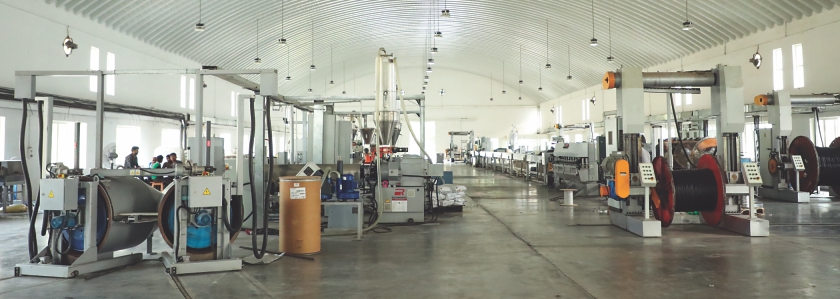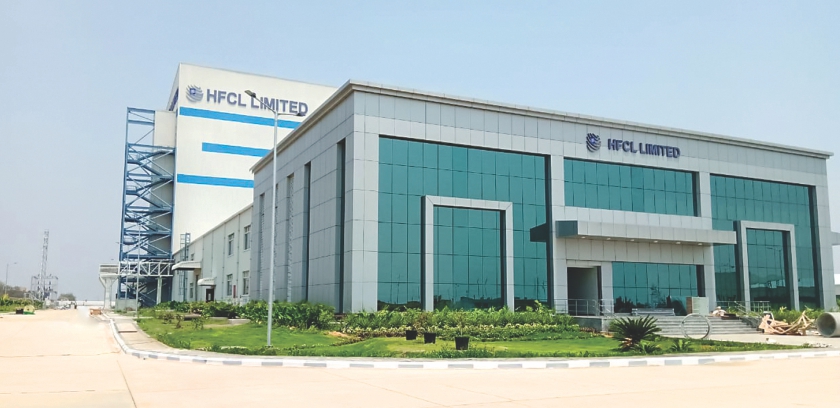The Fibre Optics technology is used all around the world for high speed communication and for medical procedures. But did you know that this ground-breaking technology was a brainchild of an Indian-born American physicist Dr. Narinder Singh Kapany? Also known as “Father of Fibre Optics”, he was named as one of the seven ‘Unsung Heroes’ by Fortune magazine in their ‘Businessmen of the Century’ issue. Today, a plethora of industries including the – medical, military, telecommunications, industrial, data storage, networking, and broadcast industries uses the fibre optic technology in a variety of applications. However, the telecommunications industry is the dominant user of the fibre optic technology.
Optical fibres has been a revolutionary technology and it represents the ‘brick’ or the core component to build up the new “highways” – which connects continents, making possible simultaneous communications among millions of people with transmission rate of tens of millions of Mbps. In addition, access networks to optically connect businesses and homes have thus culminated in the evolution of the Fibre to the Home (FTTH) networks.
The optic fibre cable technology has brought unparalleled progress in various industries; owing to the ability of transmitting data using pulses of light has opened the door for many world-changing innovations. Various advantages of the optical fibre cables such as: enormous bandwidths, low transmission loss, immunity to cross talk, electrical isolation, small size, low cost, signal security and ruggedness and flexibility, have paved a way for the tremendous growth the optical fibre cable market has attained.
Mr. Harsh Pagay, President OFC, Himachal Futuristic Communications Ltd. affirms that “With capacities severely hit across China & Europe, Indian manufacturers are in a far more competitive position and new opportunities are being looked into aggressively to augment our global footprint… Now with the renewed focus of Indian Telco Operators on enhanced customer experience and augmented ARPU costs, the focus is right back at network development and fibre densification.”
At the domestic level, the Indian optical fibre cables (OFC) market stood at USD 881.5 million in 2019 and is projected to grow at a CAGR of 19.7% to reach USD 2.1 billion by 2024. Recently, the Indian government has announced its plans of laying optic fibre cables as its top priority. The Indian optical fibre cables market is attaining good traction and is expanding to various regions in the country. Also, the ‘Work from Home’ culture has given the telecom industry an opportunity to deliver and meet the huge demand for bandwidth requirements with quality services. This augurs well for the optical fibre cable industry, as telecom operators are scrambling to maintain the service quality level and looking for innovative solutions especially in the wired broadband segment. As such, demand for optical fibres and associated materials are going to witness exponential growth worldwide in the coming years. The global fibre optic connectivity market is expected to derive growth from increasing downstream activities and growing internet usage across the world.
Mr. R. Sridharan, CEO – Birla Cable Ltd., President – Vindhya Telelinks Ltd., President – Universal Cables Ltd. and Director – Birla Visabeira Pvt. Ltd. says that “The opportunity of fiberizing the Telecom Network across India is huge and requires very large-scale investments both by the government and private sector. The recent public- private partnership (PPP) model being advocated by the government with the proper announcement of relevant policy impetus should drive this task into top gear, thereby giving a fillip to the telecom sector.”
Wire & Cable India interviewed leading players in the Optic Fibre Cable Market in India: HFCL Ltd., Birla Cable Ltd. and RailTel Corporation of India on the kind of challenges and opportunities there are in the optical fibre cable industry, how the investments in enhancing the infrastructure to support the industry would benefit the whole telecommunication network industry at large and how the imminent rollout of the 5G technology is dependent on the fibre optic as the data-transport backbone.
“As the new normal is taking control of our lives as regards the way we live, “Work from Home” has already become part of our daily routine, there is an urgent need for a reliable, high-speed Internet in terms of good wireline broadband services.”
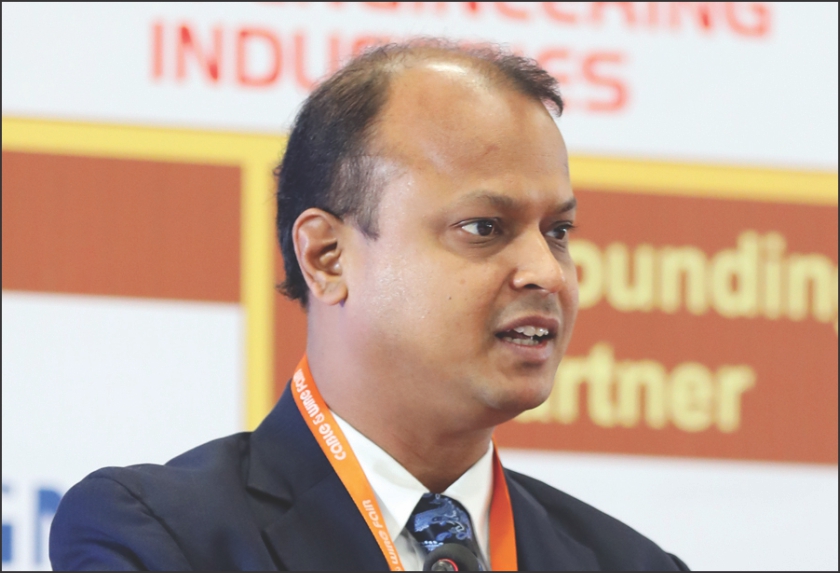
Wire & Cable India: As global data traffic grows, added demand is being put on the world’s communication networks. What challenges and opportunities does this bring for the optical fibre cable industry?
R Sridharan: Since the introduction of 4G technology in mobile communication services, it is quite evident that telecom networks have become data-centric networks, as without good data transmission capabilities, no high-speed applications can be efficiently delivered. Further, with the impending introduction of 5G technology in the Telecom Network, the deployment of optical fibres in the Network has become a must-have, as it will take care of the needs of machine-to-machine communication, Artificial Intelligence (AI), Internet of Things (IoT), autonomous driving (driverless cars), e-Commerce, e-Education, e-Medicine, entertainment, online gaming, movie streaming, social media and a host of other applications. As optical fibres have huge bandwidth carrying capacities, they are considered as “the medium” of communication networks being deployed across the world by leading telecom operators. There is an imminent need in India to fiberize all the cell sites from the current fibre penetration level of around 20 percent to more than 80-85 percent levels, which will enable a true 5G experience to all the users in terms of speed and low-latency applications.
As the new normal is taking control of our lives as regards the way we live, “Work from Home” has already become part of our daily routine, there is an urgent need for a reliable, high-speed Internet in terms of good wireline broadband services. To fulfil this requirement, operators are scrambling to augment their resources to wire the network with a good optical fibre network as part of the Fibre-to-the-Home project, which is getting converged with the upcoming 5G network requirements. On the whole, optical fibre is poised to play a pivotal role in creating a robust converged telecommunication network which will take care of the requirements of both wired broadband services and the big bang 5G-based high-speed applications.
As far as the challenges are concerned, the telecom sector always faces the issue of RoW (Right of Way), which is to be addressed with a holistic approach. Although, both Central and State Governments are trying to address this issue in a cost-effective manner, still a lot of ground has to be covered with the active participation of local authorities and all other stakeholders who are playing a major role in laying the network of optical fibre cables across the nation.
The other major concern is how to push the economy across the world. Countries across the world are trying their level best to kickstart their economy by way of announcing stimulus packages. This should augur well for the telecom sector in terms of reviving the growth momentum and keeping the fire burning on a long-term basis.
WCI: What kind of investment is India expecting in the optical Fibre cable (OFC) network infrastructure in the coming years? Where do you place yourself in this growth story of optical fibre networks?
RS: A matured telecom network in terms of growth index is measured by means of the amount of optical fibre penetration already deployed in the ground by various telecom operators. For one of the most populous economies in the world like India, the fibre penetration rate is really at the lowest levels as compared to developed geographies like the U. S., Europe and Asian economies like Japan, China, etc.
So, the opportunity of fiberizing the Telecom Network across India is huge and requires very large-scale investments both by the government and private sector. The recent public-private partnership (PPP) model being advocated by the government with the proper announcement of relevant policy impetus should drive this task into top gear, thereby giving a fillip to the telecom sector. As per market estimates, huge investments need to be made – to the tune of lakhs and lakhs of crores – in creating a robust, state-of-the-art optical fibre telecom network with very low latency.
As a result of this effort, the entire optical fibre cable Industry would benefit substantially. As one of the leading players in this Industry, M. P. Birla Group is poised to take part in the next revolution which is going to come and build the vital telecommunication infrastructure for the country in a way which is crucial for introducing new technologies and applications for the masses of our country.
WCI: When can India expect the roll-out of the 5G spectrum and what kind of demand is anticipated? What technologies is your company planning or have already introduced to meet the impending 5G demand in the coming years?
RS: Although, as per reports, the Government of India has taken a keen interest in becoming one of the telecom market leaders in introducing 5G technology in the mobile communication segment, unfortunately, the outbreak of COVID-19 pandemic across the globe and India has temporarily put a hurdle in the 5G spectrum auction as a result of a lull in economic activities. To revive the sentiments and bring back growth – to bring qualitative change at the ground level – the government has taken quite a few measures. As per the industry’s expectations, once this pandemic is gone, the auction should take place around the middle of 2021 with active support from all stakeholders.
When the question of demand for optical fibre cables comes into the picture, the introduction of 5G communication technology in mobile networks requires huge volumes of fibres to be deployed. As per the requirement estimates, 4-5 times the incremental quantities of optical fibres are required to be put into the telecom networks, as compared to the current levels of fibres existing for 4G technology. As such, telecom operators are continuously strengthening the 4G network by augmenting the fibre installations to have a reasonable penetration amongst the masses.
As the impending introduction of 5G rollout requires a huge deployment of optical fibre networks with more fibre count for high dense applications, high fibre count optical fibre cables will be the norm of the industry. M.P. Birla Group, in its various arms, has already prepared itself for the same by way of introducing futuristic and innovative high fibre count ribbon type of optical fibre cables, which already figure in its portfolio of offerings. The M.P. Birla Group companies have done further innovations in offering lightweight, micro-optical fibre cables for space-constrained installations, especially in densely populated city environments, which can pave the way for quick network enhancement. More and more innovative developments are taking place, true to M.P. Birla Group’s resolve to serve the nation and as an on-going culture of devising new process methodologies coupled with the commitment to the success of the telecommunication sector.
“More important than the immediate 5G roll-out, is creating the right kind of network architecture for optimized network performance.”
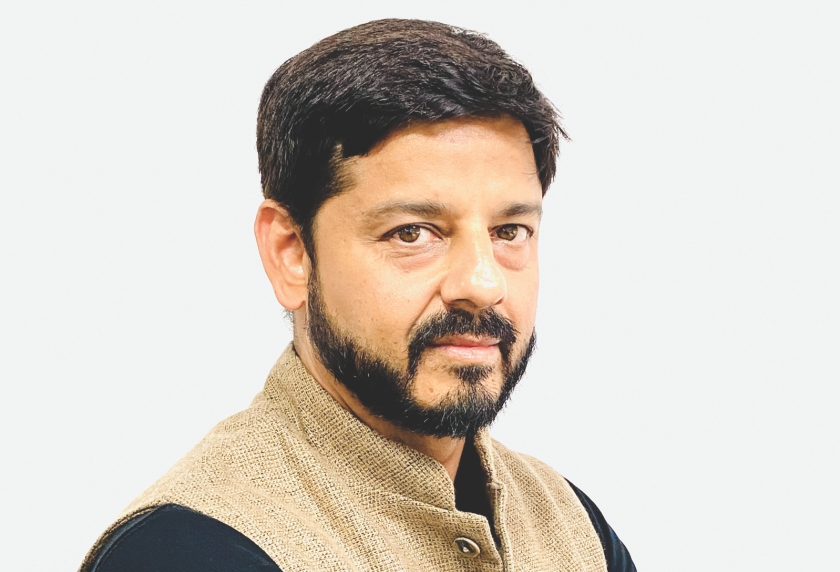
Wire & Cable India: As global data traffic grows, added demand is being put on the world’s communication networks. What challenges and opportunities does this bring for the optical fibre cable industry?
Harsh Pagay: Global data traffic trends had been on the rise since even before the COVID-19 pandemic and with the world coming to a grinding halt and people forced to live indoors, consumption has shattered all previous ceilings. So where does this place us? As operators look at more efficient network roll-out and management systems, the backend is also being strengthened to support the new network architecture while also maintaining the flexibility to upgrade to 5G as and when the spectrum is available. All this technology is backed by a deep fibre network which acts like a core to the whole eco-system fueling connectivity. With Western countries far ahead of India in terms of fibre deployment, this presents a huge opportunity for the domestic market as most Indian operators are now beginning to create more fibre backed network systems and ultimately prepare for the 5G roll-out. On the other hand, developed Western markets are now in the process of network upgradation and fibre densification. With capacities severely hit across China & Europe, Indian manufacturers are in a far more competitive position and new opportunities are being looked into aggressively to augment our global footprint.
WCI: What kind of investment is India expecting in the optical fibre cable (OFC) network infrastructure in the coming years? Where do you place yourself in this growth story of optical fibre networks?
HP: As per recent ICRA estimates, the current fibre assets of major Indian telecom operators are about Rs. 1.2 Trillion while the Indian OFC market is valued at over Rs. 65,200 Million for the year 2019. Now with the renewed focus of Indian Telco Operators on enhanced customer experience and augmented ARPU costs, the focus is right back at network development and fibre densification. New network hardware orders placed by operators will need some sort of fibre backed network to relay and support the amplifying hardware to work seamlessly. With fibre set to play a key role in the future of network architecture here in India, HFCL is already in-line with the future demand and is set to deliver enhanced capacities when the opportunity arises. We have recently launched our green-field certified, truly next-gen Optical Fibre manufacturing facility in Hyderabad, which will cater to both the internal demand for manufacturing OFC and for market-ready sale. HFCL’s other strategic business units work seamlessly with network operators ensuring technological superiority and our products and services are in-line with the current market trends.
WCI: When can India expect the roll-out of the 5G spectrum and what kind of demand is anticipated? What technologies is your company planning or have already introduced to meet the impending 5G demand in the coming years?
HP: More important than the immediate 5G roll-out, is creating the right kind of network architecture for optimized network performance. The spectrum can only guarantee access to faster transmission speeds, however, it’s the equipment and backbone of the network that delivers performance. With the advent of new software-based network platforms, network hardware can work efficiently across the spectrum delivering both 4G and 5G services with only a software change. Operators in India are increasingly looking at getting this mix right with a healthy blend of radio and fibre backed networks across operating circles. The higher the technology pyramid you go, the lesser is the margin of error in terms of getting the product mix right. That has to be kept in mind by not shortchanging the adequate hardware and software mix when future deployments or existing infrastructure upgrades are planned. 5G is an inevitable evolution of the Indian telecom industry, however, it has to be handled very cautiously while making sure that all past lessons are fully kept in perspective.
“India is going to see a surge in demand of optic fibre cable and associated equipment in the coming days due to increase in work from home culture, online classes for schools and colleges as well as seminar/lecture through web links.”
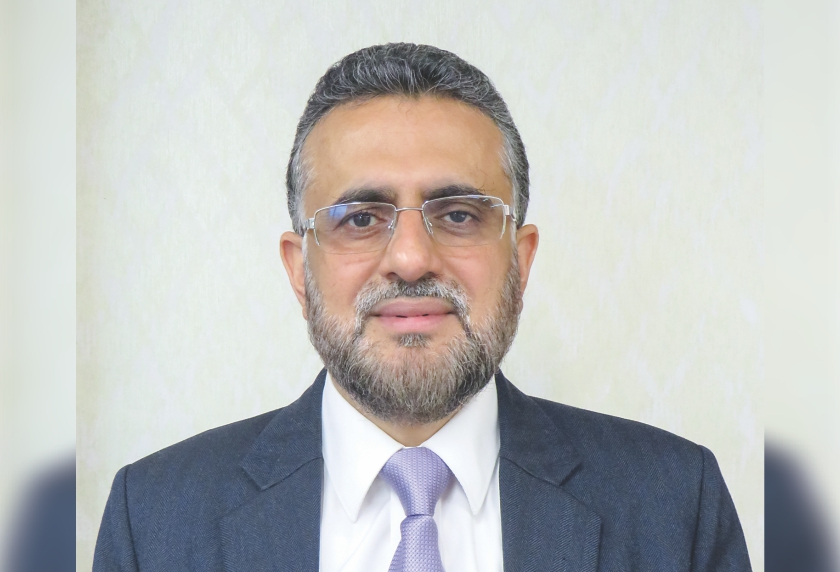
Wire & Cable India: As global data traffic grows, added demand is being put on the world’s communication networks. What challenges and opportunities does this bring for the optical fibre cable industry?
Puneet Chawla: India is the second-largest country in terms of internet subscribers. As of 2019, App downloads in the country has increased from 12.07 billion in 2017 to 19 billion in 2019 and is expected to reach 37.21 billion by 2022. However, as Covid19 forced people to maintain social isolation, the demand for data has seen an unprecedented spike. Internet was already essential for urban life but with organizations now preferring the ‘Work from Home’ culture and schools going online, high-speed internet through optic fibre cable is becoming a household need. Optical fibre is a reliable transmission medium for modern backbone network infrastructures which assures unwavering service to end-user without quality or data loss. That is why reliability on OFC for providing high-speed internet to the masses is very high. Also, the downtime of fibre is very less, lowest cost per GB and ability to provide services to very high data usage customers are some of the key benefits of this network. Fibre roll-outs in India need to match the surge in data consumption as well as digitization initiatives that are under-way.
India has a huge digital experience divide between Urban and Rural India. While the existing optic fibre cable network in the urban area is dense with huge outreach, the rural areas are mostly untouched. COVID-19 crisis has given a push to the Digital growth of the country as going online has become a necessity. The need for developing state-of-the-art telecom infrastructure along with dense net of OFC in tier-2 and 3 cities and rural India is at peak, and more and more operators are coming forward to reach the Indian hinterland.
India is going to see a surge in demand for optic fibre cable and associated equipment in the coming days due to an increase in work from home culture, online classes for schools and colleges as well as seminar/lecture through web links. This is going to increase the demand of the internet along with a huge bandwidth requirement. The requirement of fibre connectivity will result in network expansion as well as demand for maintenance works, which is an opportunity for this industry.
One of the major challenges for the industry is going to be providing reliable and cost-effective products in a short amount of time. The capacity of the current industry may not be sufficient, as at present only a few companies are manufacturing fibre in India. Also, few companies in India that are making good quality accessories material or equipment at present are posed with a huge challenge with respect to reliability. In addition, with a push towards ‘Make in India’ and the ‘Vocal for Local’ initiative, the Indian OFC market has the opportunity to produce and promote Indian products rather than depending heavily on imports. The recent guideline from the Govt. of India to call tenders valued less than 200 crores from only Indian companies is definitely a booster. Currently, India is looking at a Digital boom like never before and the OFC industry is going to have a huge role to play in it.
WCI: What kind of investment is India expecting in the optical fibre cable (OFC) network infrastructure in the coming years? Where do you place yourself in this growth story of optical fibre networks?
PC: Indian consumers are increasingly shifting towards internet-driven applications such as video on demand, HDTV, etc., which is boosting investments towards OFC network expansion throughout the country. A large chunk of working-class populations in India own high-end smartphones supporting various technologies such as Wi-Fi, 3G, etc. This class of consumers, in particular, is boosting the demand for on-the-go high-speed data services. In the past few years, the tier2 and Tier 3 cities of the country has witnessed a steady demand growth for high-speed data. Digitization of cable TV network has been mandated in the country, which is further propelling the demand for the OFC network. The demand for stable data connectivity is on a sharp rise in rural India as well which is giving the much-needed thrust to building better telecom infrastructure to connect nooks and corners of the country.
As a result, the government of India has announced various projects to build and strengthen the OFC network for addressing the country’s increasing data transmission requirements. In the past few years, there has been a six-fold increase in Government spending on telecommunications infrastructure and services in the country – from Rs 9,900 crores (USD 1.41 billion) during 2009-14 to Rs 60,000 crores (USD 8.55 billion) (actual + planned) during 2014-19. Country-wide optical fibre cable (OFC) coverage has also doubled – from 700,000 km to 1.4 million km.
RailTel has been in the forefront in building the OFC network in remote parts of the country bridging the digital divide. RailTel is a key contributor in Bharatnet (erstwhile National Optical Fibre Network) project to connect Gram Panchayats with a principal telecom network, for high-speed data transmission and internet services. The project is expected to be one of the major drivers for OFC installations in India over the next five years. RailTel would be laying 2200 Rkm of OFC in Gujrat alone.
RailTel owns an exclusive Right of Way (RoW) along the Railway tracks and has 55000+ Route KM OFC networks across the country. Railways will be laying down about 7000 Rkm of OFC to ultimately cover the entire railway network across the country.
With its own collaborative RailWire retail broadband platform, RailTel is expanding its access network to push for subscribers ten times the present subscribers base and deliver high-speed reliable connectivity. This will require the laying of additional OFC to expand access to colonies and residential areas and laying OFC for various existing Government projects.
WCI: When can India expect the rollout of the 5G spectrum and what kind of demand is anticipated? What technologies is your company planning or have already introduced to meet the impending 5G demand in the coming years?
PC: Before the COVID-19 crisis, India was gearing up for 5G rollout scheduled at the end of 2020 or the beginning of 2021. However, going through the current scenario, it is unlikely that the roll-out will meet the timeline. With the global economic crisis and low equipment production rate, 5G in India may need to wait till the mid/end of 2021. 5G rollout in India will see a massive demand for infrastructure building giving a boost to the telecom equipment manufacturing industry.
India, to date, does not have proper mobile connectivity in the remote part of the country. Hence, a countrywide 5G rollout may take years of building infrastructure and investment. Along with the massive build-up we also need to do some basic changes in our infrastructure as well as in Technology like Massive MIMO (multiple-input and multiple-output) antennas, Edge computing, small cells, Beamforming, Convergence of Wi-Fi and cellular, NOMA (non-orthogonal multiple access), SDN/NFV, Channel coding, etc.
RailTel being a neutral telecom infrastructure provider is constantly improving and expanding its network for providing better services to its clients. We are currently focusing on expanding our OFC network, upgrading existing network equipment, fiberization of mobile towers, etc. to be ready to provide infrastructure for 5G.




